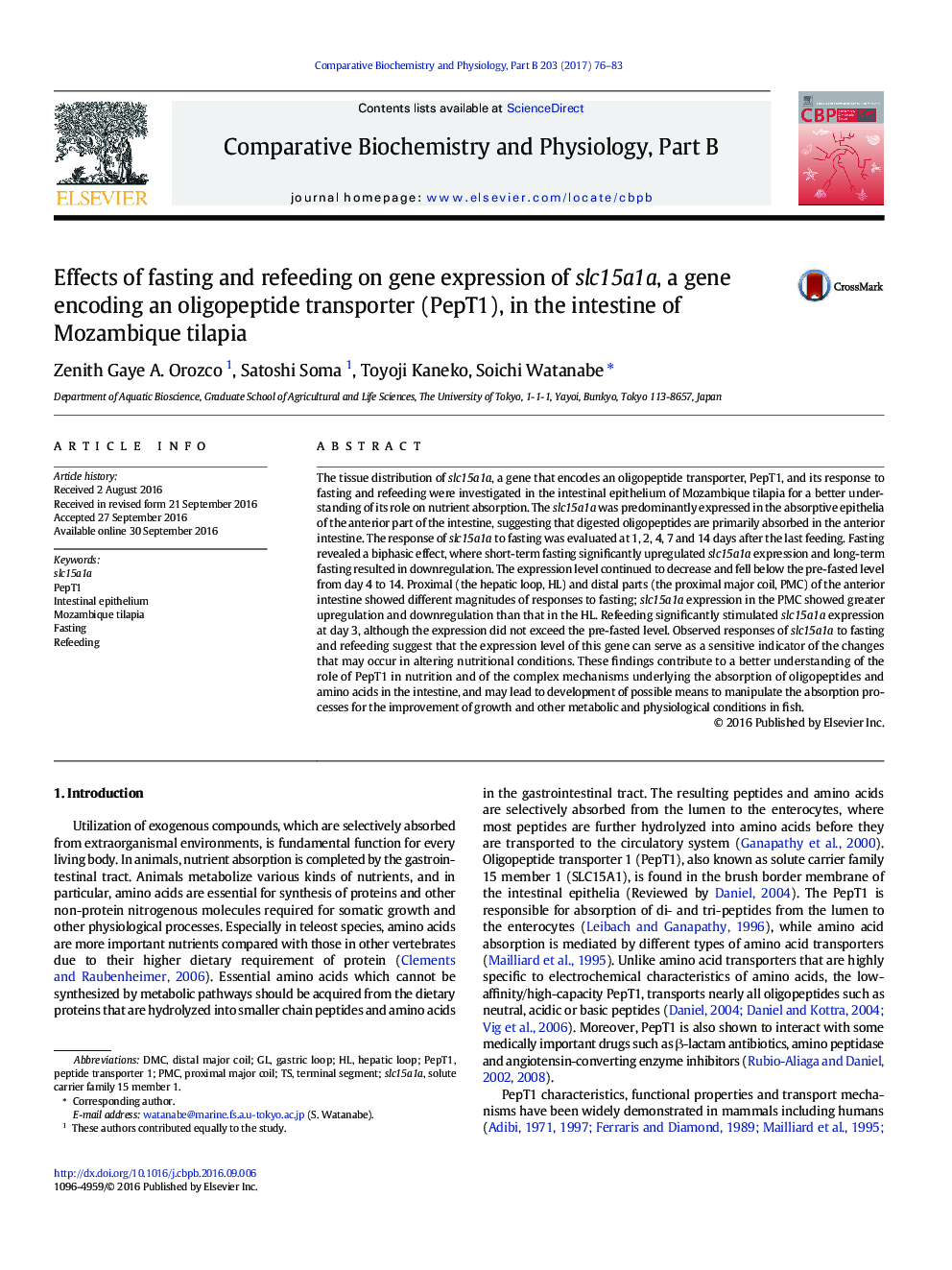| Article ID | Journal | Published Year | Pages | File Type |
|---|---|---|---|---|
| 5510514 | Comparative Biochemistry and Physiology Part B: Biochemistry and Molecular Biology | 2017 | 8 Pages |
Abstract
The tissue distribution of slc15a1a, a gene that encodes an oligopeptide transporter, PepT1, and its response to fasting and refeeding were investigated in the intestinal epithelium of Mozambique tilapia for a better understanding of its role on nutrient absorption. The slc15a1a was predominantly expressed in the absorptive epithelia of the anterior part of the intestine, suggesting that digested oligopeptides are primarily absorbed in the anterior intestine. The response of slc15a1a to fasting was evaluated at 1, 2, 4, 7 and 14Â days after the last feeding. Fasting revealed a biphasic effect, where short-term fasting significantly upregulated slc15a1a expression and long-term fasting resulted in downregulation. The expression level continued to decrease and fell below the pre-fasted level from day 4 to 14. Proximal (the hepatic loop, HL) and distal parts (the proximal major coil, PMC) of the anterior intestine showed different magnitudes of responses to fasting; slc15a1a expression in the PMC showed greater upregulation and downregulation than that in the HL. Refeeding significantly stimulated slc15a1a expression at day 3, although the expression did not exceed the pre-fasted level. Observed responses of slc15a1a to fasting and refeeding suggest that the expression level of this gene can serve as a sensitive indicator of the changes that may occur in altering nutritional conditions. These findings contribute to a better understanding of the role of PepT1 in nutrition and of the complex mechanisms underlying the absorption of oligopeptides and amino acids in the intestine, and may lead to development of possible means to manipulate the absorption processes for the improvement of growth and other metabolic and physiological conditions in fish.
Related Topics
Life Sciences
Biochemistry, Genetics and Molecular Biology
Biochemistry
Authors
Zenith Gaye A. Orozco, Satoshi Soma, Toyoji Kaneko, Soichi Watanabe,
